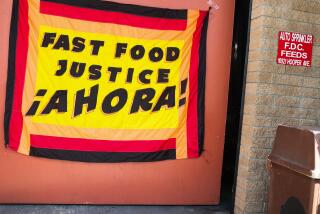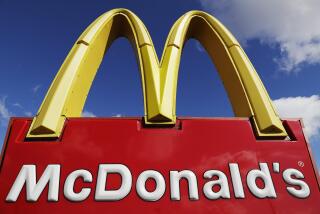The Australian way to settle Americaâs fast-food minimum-wage debate
On Thursday, fast-food workers in more than 100 cities across America will stage a national strike to demand a living wage of $15 an hour. Conservatives and restaurant conglomerates have responded by arguing that fast-food jobs are meant for inexperienced teenagers as entry-level, job-training types of positions, and therefore donât merit living-wage pay.
In many cases thatâs probably true. Those of us who began our working lives slinging pizzas or flipping burgers as teenagers know that we likely didnât deserve a living wage for our labors. I probably ate more pizza than I sold as a 17-year-old working summers in my local parlor.
But we also know that in todayâs economy, it isnât the squeaky-voiced, pimple-faced teenagers of âThe Simpsonsâ who are staffing fast-food jobs anymore. In the wake of the 2008 recession, plenty of skilled older workers are trying to feed their families on fast-food wages, and they have been working for years for low pay. According to the Center for Economic and Policy Research in Washington, only 30% of fast-food workers are teenagers, while 36% of adult fast-food workers are supporting families.
YEAR IN REVIEW: Washingtonâs 5 biggest âfailsâ of 2013
If youâre operating a fast-food joint, why bother with inexperienced teenagers when you can hire desperate adults with actual job skills for entry-level wages? Fast-food jobs may not be all that complicated, but professionalism â in terms of showing up on time, working hard and knowing how to conduct oneself in a workplace â is a job skill that develops over time. In addition, handling money is an obvious fast-food task that most businesses would surely rather put in the hands of an adult.
Teenagers, meanwhile, arenât getting the job training they need and have fewer ways to work and save for college.
Itâs a quandary that both sides of the political aisle can agree needs to be addressed.
America isnât typically fond of looking overseas for political inspiration, but, in this case, it may be worth examining Australian labor laws for an elegant solution. The minimum wage in Australia is $16.37 an hour for working adults, more than double the U.S. federal minimum hourly wage of $7.25.
More than a few conservative eyeballs probably just bulged out of their sockets seeing that number. Stay with me, though, because hereâs where things get interesting: For 19-year-olds in Australia, the minimum wage is $13.51. For 17-year-olds, itâs $9.46. For 15-year-olds, itâs $6.03.
Were we to establish an Australian-style age-based sliding minimum wage in America, companies such as McDonaldâs would naturally look to hire younger, cheaper laborers for entry-level positions, giving them a taste of working life. Teenagers would see their pay automatically rise as they got older and more experienced, which would serve as an incentive for them to stay on the job rather than flaking at the first sign of frustration.
Fast food in America has historically been a â100%â turnover industry, in which the company loses the equivalent of its entire workforce over the course of the year. Although that number dipped to 90% in 2011, according to the quick-service restaurant industry trade publication QSR, turnover is still a huge problem. Enticing teenagers to stick around for a nearly $2-an-hour birthday raise would not only save companies the expense of constantly training new workers, it would help fulfill the actual purpose of youth employment, which is for teenagers to learn job skills and the basics of running a business.
Entry-level jobs would go to entry-level workers.
At the same time, a $15 hourly minimum wage for older workers would ensure that jobs with responsibilities too tough for teenagers would be fairly compensated.
Obviously, in this scenario, some older, low-skill workers would lose their jobs to competition from teenagers. But thatâs a small price to pay to create a job market for teens, as well as to ensure that adult workers are paid fairly.
Can the fast-food industry survive paying a living wage while simultaneously bolstering teen employment?
McDonaldâs Australia earned $260.88 million in 2011 on $1.54 billion in revenue. Iâd say itâs more than possible.
ALSO:
The college-for-all model isnât working
McManus: For Obama, itâs all about Obamacare
Tom Daley and Maria Bello show thereâs more than one way to be out
Matthew Fleischer is a Los Angeles-based freelance journalist. Follow him on Twitter @MatteFleischer
More to Read
A cure for the common opinion
Get thought-provoking perspectives with our weekly newsletter.
You may occasionally receive promotional content from the Los Angeles Times.











